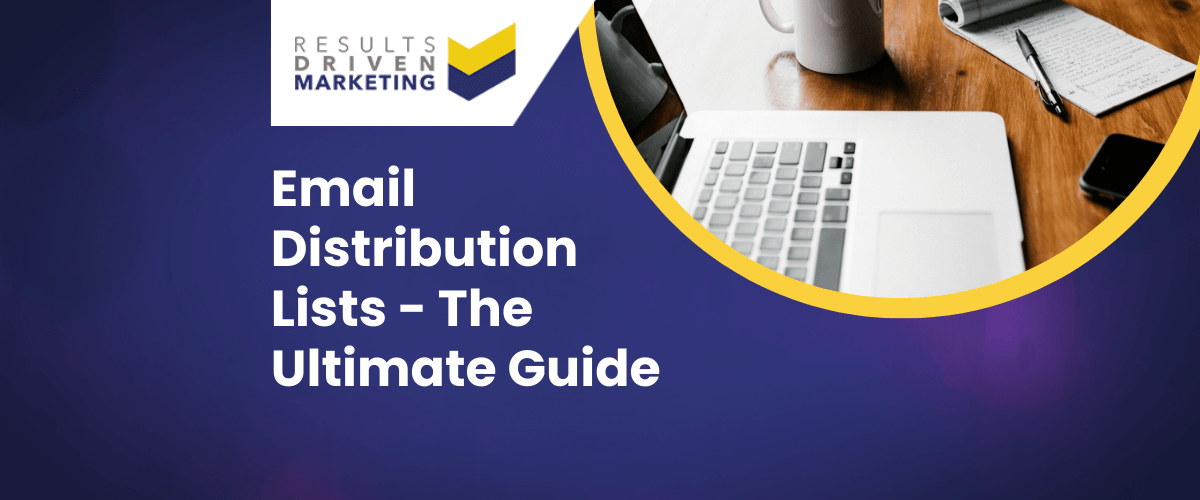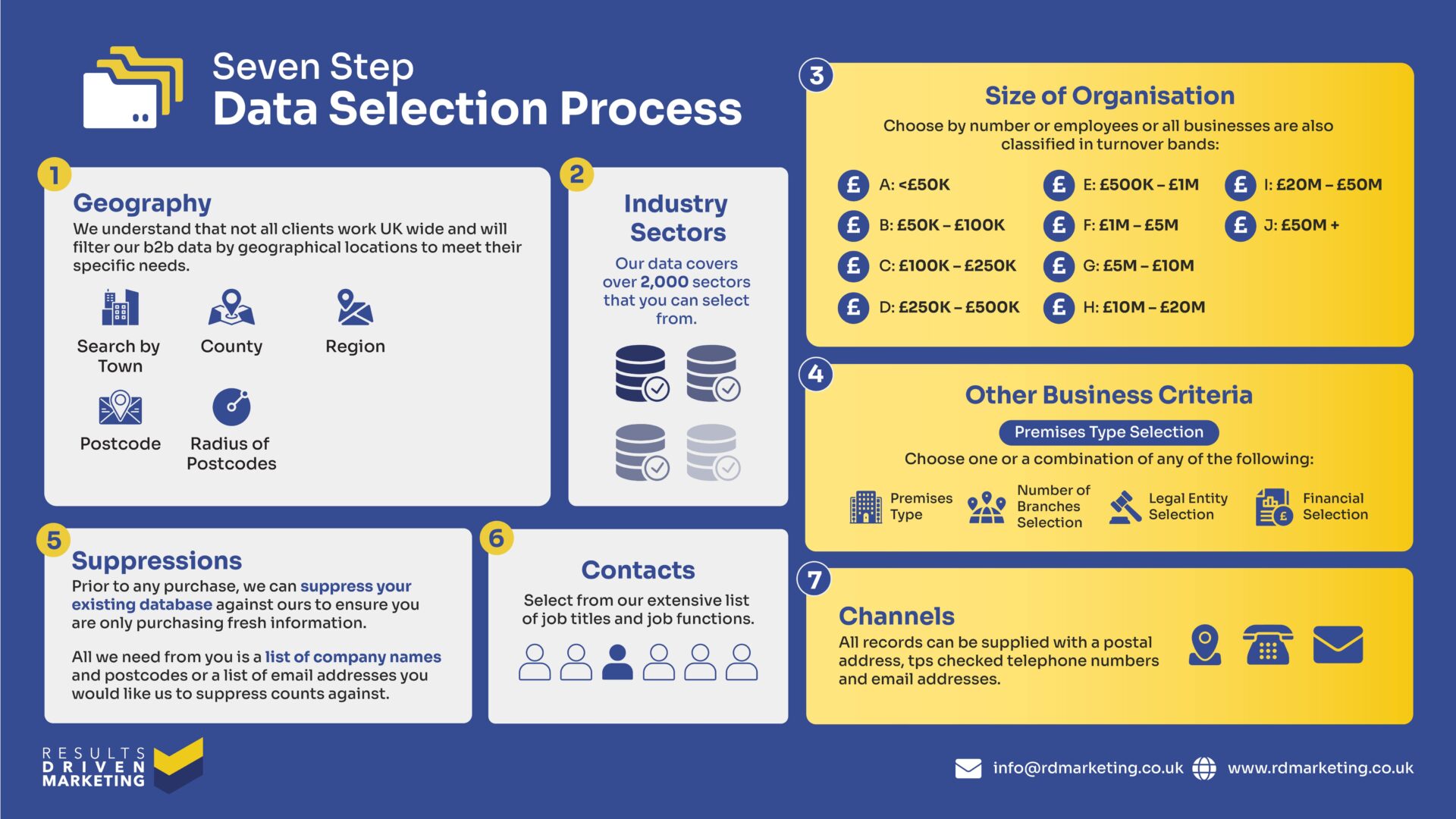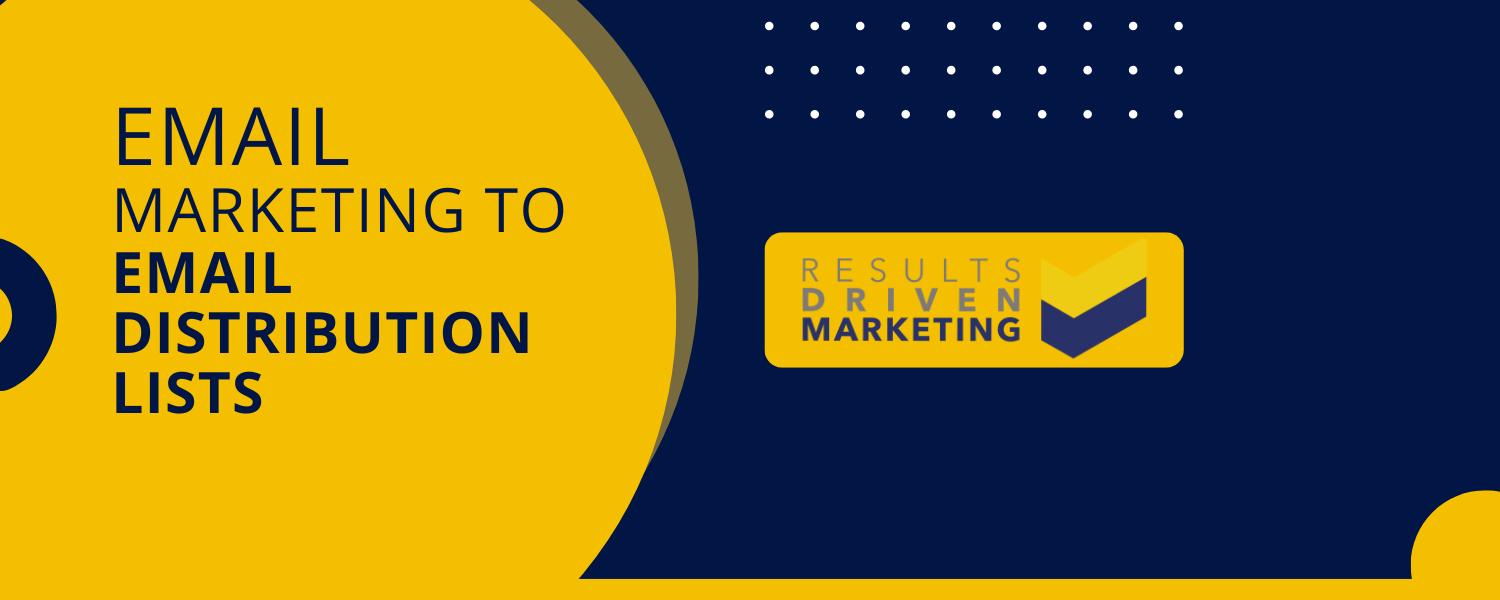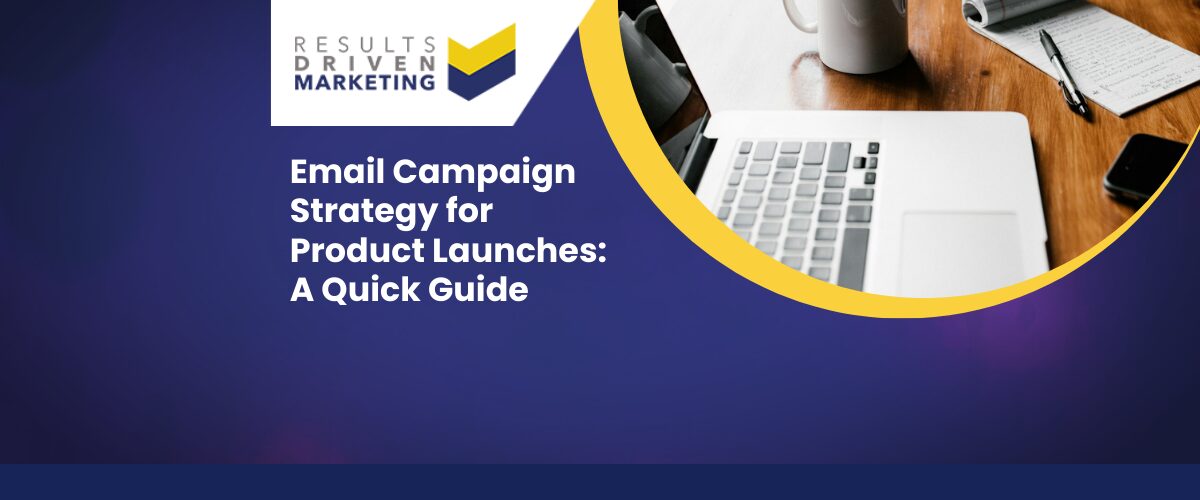
Email Distribution Lists – The Ultimate Guide
Table of contents:
How Crucial are Email Distribution Lists to your Business?
An email distribution list via email is a quick and easy way to contact a large group of individuals at once.
Everyone, then, should know how to create one and be able to do so easily, if email is among their primary means of communication. To truly maximise your email usage, you should familiarise yourself with this advanced function.
Steps to Create an Email Distribution List in Detail
Gather the list of email addresses
The first step is to gather the email addresses you want to add to your distribution email list. You can do this manually by entering each address in your list, or you can use a CSV file or other type of contact list to import multiple addresses at once.
Create a new distribution list
Once you have the list of email distribution lists, you will need to create a new distribution email list in your email program. Depending on your email program, this may require you to select “Create a new mailing list” or “Create a new distribution list” from the menu.
Add members to the email distribution list
Once you have created the list, you can add members to the list. Depending on your email program, this may require you to select “Add members” or “Import contacts” from the menu.
Select the file or type in the addresses
Depending on the method you’re using to add members to the list, you may need to select the file containing the distribution email lists or type them in manually.
Confirm the list
Once you have added all the members to the list, you should confirm that all the addresses have been added correctly. You should review the list before you can send out emails to the distribution email list.
Send out emails
Finally, once you’ve confirmed the list, you can send out emails to the distribution email list. Depending on your email program, you may need to select “Send to distribution list” or “Send to mailing list” from the menu.
Buy email distribution email lists
It is also possible to buy very high quality email lists that match your target markets exactly.
What Are Email Distribution Lists?
At its core, an email distribution list is a curated collection of email addresses grouped together for the purpose of sending targeted communications.
Unlike random email lists, these are structured, organised, and often tailored to meet specific marketing objectives. By leveraging email distribution lists, businesses can communicate directly with their audience in a way that’s efficient, relevant, and scalable.
Key Components of Email Distribution Lists
Let’s break down what makes up an effective email distribution list:
Contacts:
These are the foundation of any email distribution list. A contact could be a lead, a customer, or even a business partner.
High-quality lists, like those provided by RD Marketing’s B2B Data services, ensure that your contacts are accurate and up-to-date.
Segmentation:
Segmentation divides your email distribution lists into smaller, more manageable groups based on specific criteria.
You can segment by location, industry, purchasing behavior, or engagement levels, making your campaigns more personalised and effective.
For instance, with international email lists, you can target audiences across different countries effortlessly.
Management Tools:
Proper management ensures that your email distribution lists remain clean and organised.
Tools like those offered through our Email Marketing Management Services help streamline the process, ensuring seamless communication with your audience.
Types of Email Distribution Lists
Not all email distribution lists are created equal. Depending on your business goals, you’ll find that certain types of lists work better for specific campaigns. Here’s a breakdown of the most common types:
B2B Email Distribution Lists
These lists are designed to help businesses connect with other businesses.
They often include key decision-makers, such as CEOs, marketing heads, or procurement managers.
For example, telemarketing data can complement your email campaigns by ensuring you’re targeting the right contacts.
B2C Email Distribution Lists
Focused on connecting businesses with consumers, these lists are ideal for brands looking to engage with individual customers.
Consumer-centric businesses benefit greatly from using consumer data for tailored campaigns.
Hybrid Lists
A combination of B2B and B2C, these are often used by businesses that cater to both markets, like SaaS companies or financial services.
Specialised Lists
Some businesses require highly targeted lists, such as healthcare professionals, real estate agents, or local businesses.
Specialised lists benefit from services like data enrichment, which enhances the depth of your existing data.
Why the Quality of Email Distribution Lists Matters
The effectiveness of your email marketing campaigns hinges on the quality of your email distribution lists. Poorly curated or outdated lists can lead to low engagement, higher bounce rates, and even potential penalties from email service providers.
To maintain high-quality lists:
- Regularly clean your data using a CTPS Checker or data cleansing services like those offered by RD Marketing.
- Ensure all contacts are verified and up-to-date, which reduces the risk of sending emails to inactive or incorrect addresses.
By investing in high-quality services, such as email address list data, businesses can enjoy better open rates, improved engagement, and higher ROI.
How to Segment Email Distribution Lists
Segmenting an email distribution list is essential for effective email marketing.
Many businesses make the mistake of sending the same email communication to their entire email list, but this can result in a high unsubscribe rate and a low engagement rate.
Segmenting your email distribution list allows you to personalise your email messaging and send targeted campaigns to specific groups of subscribers. Here are some steps to help you effectively segment your email distribution list:
Analyse your list when you Email Distributors
Take a close look at your email distribution list and group subscribers based on their behaviour, preferences, and interests. You can segment your list based on factors such as demographic information, email engagement, purchase history, and behaviour on your website when you email distributors.
Define the segments within your distribution email list:
Once you have analysed your email list, define the various segments you want to target. These can include customers who have made a recent purchase, subscribers who have not opened your recent emails, or subscribers who have shown a specific interest in a particular product.
Create targeted content for your Email Distributors
Once you have defined your segments, tailor your content to meet their needs. Craft personalised messages that address their specific interests, pain points, and behaviours. This will help increase their engagement with your brand and drive conversion when you email distributors.
Send targeted campaigns when you Email Distributors to their Email Distribution List
Send targeted campaigns to specific segments of your email distribution list. By sending tailored content to a smaller audience, you increase the chance of engagement, conversion, and retention when you email distribution lists.
Monitor your campaigns when you Email Distribution List
Keep track of your email campaigns and analyse the results. By monitoring your campaigns, you can identify which segments respond best and adjust your targeting and messaging accordingly for optimal performance.
In conclusion, segmenting your email distribution email list is essential for effective email marketing campaigns. By personalising your messaging and targeting specific segments of your audience, you can increase engagement, drive conversions, and build long-term relationships with your subscribers when you email distribution email list.
Top Tips for Maintaining Healthy and Effective Email Distribution Lists
An email distribution list is an invaluable tool for businesses and marketers to communicate directly with their customers, share important updates, and promote products or services.
Maintaining a healthy, effective email distribution list is essential for maximising engagement and ensuring long-term success. In this part of the article, we will discuss the top tips for maintaining an email distribution list that is both efficient and delivers the desired results.
Keep Your Email Distribution Lists Updated and Clean when you Email Distributors
Regularly updating and cleaning your email distribution list is crucial to ensure its effectiveness. Remove invalid email addresses, bounced emails, and unengaged subscribers.
This not only improves deliverability but also ensures that your messages reach the intended audience, leading to higher open and click-through rates when you email distributors.
Segment Audiences within your Email Distribution Lists when you Email Distributors to Email Distribution Lists
Segmenting your email distribution list allows you to send targeted and relevant content to specific groups within your audience. This can be based on factors such as demographics, location, past purchases, or engagement levels.
By sending tailored content, you increase the chances of your subscribers engaging with your emails and reduce the risk of unsubscribed when you email distributors.
Prioritise Permission-based Marketing where possible when you Email Distributors to Email Distribution Lists
Try to obtain permission from your subscribers before adding them to your email distribution list. Permission-based marketing ensures that your subscribers genuinely want to receive your content, leading to better engagement and reduced spam complaints.
However, a great way to start is to buy an email distribution lists and get consent from respondents as you go when you email distributors. You can contact us to hear more about how we can help you with that.
Focus on Quality Content when you Email Distributors
To maintain an engaged and loyal subscriber base, focus on delivering high-quality, valuable content. Share information that is relevant, interesting, and helpful to your audience.
By consistently providing value, your subscribers will be more likely to engage with your email distribution lists, anticipate future communications, and share your content with others.
Test and Optimise when you Email Distributors
Experiment with different subject lines, email formats, and content to determine what resonates best with your audience. Monitor key metrics, such as open rates, click-through rates, and conversions, to evaluate the effectiveness of your campaigns.
Use this data to refine your approach and optimise your email marketing efforts.
Encourage Engagement and Feedback from Your Email Distribution Lists when you Email Distributors
Encourage your subscribers to engage with your content by asking for their opinions, feedback, and preferences. This not only helps you better understand your audience but also fosters a sense of community and loyalty among your subscribers.
Additionally, actively responding to feedback and making improvements based on your subscribers’ input demonstrates your commitment to their satisfaction when you email distribution list.
Monitor and Analyse Performance Metrics when you Email Distribution Lists
Keep track of your email marketing performance by monitoring key metrics, such as open rates, click-through rates, bounce rates, and unsubscribe rates.
Analysing these metrics will help you identify trends, strengths, and weaknesses in your email campaigns.
Use this information to make data-driven decisions and continuously improve your email marketing efforts when you email distributors in the Email Distribution list.
Improving Email Deliverability
When it comes to email distribution lists, improving deliverability is honestly one of the most crucial parts of your entire email marketing strategy. You could have the best-looking email in the world, a perfectly targeted audience, and a brilliant offer — but if your emails are ending up in spam folders? Well, that’s pretty much game over.
Getting your emails into your audience’s inbox (where they actually belong) means focusing on a few key things: sender reputation, spam triggers, proper authentication protocols like SPF, DKIM, DMARC, and, not to forget, regular list cleaning. Let’s unpack these one by one.
The Importance of Sender Reputation
Your sender reputation is kinda like your credit score, but for email marketing. If your score is high, your emails glide straight into inboxes. If it’s low, you’re likely to be flagged or, worse, blocked.
Here’s why it matters for your email distribution lists:
-
Internet Service Providers (ISPs) track your behaviour over time.
-
High bounce rates? Frequent spam complaints? That’s a red flag.
-
A good sender reputation increases your chances of hitting the inbox and boosts your open rates.
A few quick tips to keep your sender reputation in top shape:
Send to clean, verified lists. If you’re not sure about the quality of your list, consider our Data Cleansing Services to give your database a refresh.
Stay consistent with sending volume. Avoid spikes that make ISPs suspicious.
Keep engagement high. Focus on active, interested audiences by using Email Address List Data that fits your target perfectly.
Avoiding Spam Triggers
Spam filters have become annoyingly smart over the years — and they’re watching everything.
To keep your email distribution lists performing at their best, avoid these common spam triggers:
-
Overuse of salesy language: Words like “free,” “buy now,” or “guaranteed” might land you in trouble.
-
Misleading subject lines: Always be transparent.
-
Heavy use of images with little text: Spam filters flag image-heavy emails.
-
Poor list hygiene: Sending to outdated or non-engaged lists is risky.
Pro Tip: When you’re building out your email campaigns, work with clean and accurate B2B Data to make sure you’re targeting the right people from the get-go.
Authentication Protocols (SPF, DKIM, DMARC)
Now, this bit might sound technical — and well, it is — but stick with me because it’s worth it.
These protocols basically prove to ISPs that you are who you say you are:
-
SPF (Sender Policy Framework): Authorises your domain to send emails.
-
DKIM (DomainKeys Identified Mail): Adds an encrypted signature to your emails, verifying authenticity.
-
DMARC (Domain-based Message Authentication, Reporting, and Conformance): Gives you full control over how your emails are handled if they fail SPF or DKIM checks.
Setting these up properly:
-
Protects your brand reputation.
-
Prevents phishing attacks using your domain.
-
Improves trust with ISPs and boosts your deliverability.
Need help managing all these technical layers while running your campaigns? Our Email Marketing Management Services take care of all the heavy lifting, so you can focus on your message.
Regular List Cleaning
Think of regular list cleaning like spring cleaning for your email distribution lists. It’s all about keeping things fresh and tidy.
Why it’s non-negotiable:
-
Removes invalid or outdated contacts that can damage your sender reputation.
-
Boosts open and click-through rates by focusing on engaged recipients.
-
Helps you comply with data regulations like GDPR and CAN-SPAM.
Simple steps to clean your list:
Use an automated tool or service like our Data Cleansing Services to identify and remove dead weight.
Regularly verify contacts with tools like our CTPS Checker — especially for B2B telemarketing follow-ups.
Re-engage inactive subscribers or let them go gracefully if they remain unresponsive.
Oh, and by the way, if you’re expanding globally, don’t forget to check out our International Email List options to ensure you’re reaching the right audience worldwide!
Taking care of your email distribution lists with these deliverability best practices doesn’t just make your campaigns more effective — it protects your brand reputation and gives you better ROI, every single time. And of course, if you need expert support with building, cleaning, or managing your lists, we’re always here at RD Marketing to help.
Email Marketing to Email Distribution Lists
The benefits of email marketing to email distribution lists
Email marketing is a cost-effective way to communicate with your audience, specifically those who have opted-in to receive your messaging. Not only is it a cost-effective tool, but it also offers unparalleled flexibility to reach your audience with precision, through email distribution lists. Let’s explore the benefits of email marketing to email distribution lists.
It’s Targeted
One of the main benefits of email marketing is that it offers the ability to communicate with your audience with precision. You can tailor your messaging and offers to specific segments of your email distribution list, ensuring that every email is relevant and of interest to the recipient.
This personalisation is a powerful tool for building a connection with your audience and increasing the likelihood they will take action on your offers.
It’s Cost-Effective
Another advantage of email marketing to email distribution lists is that it provides a cost-effective way to promote your brand or business. With the rise of social media advertising, email marketing offers a budget-friendly alternative to reach your audience.
It requires minimal investment in terms of resources and can generate significant savings in terms of marketing costs.
It’s Measurable
Email marketing offers a unique ability to measure the effectiveness of your messaging. By analysing open rates, click-through-rates, and conversion rates, you can track the performance of your campaigns and continually improve.
The analytics provide insights into what is working and what needs to be improved, allowing you to make data-driven decisions for your email marketing strategy.
It’s Scalable
Finally, email marketing offers excellent scalability as your business grows. You can easily add new email addresses to your distribution list and increase the volume of messaging as and when needed.
This scalability is essential for businesses looking to expand their reach and connect with new audiences. In conclusion, email marketing to email distribution lists is a useful tool for businesses of all sizes.
It provides a targeted, cost-effective, measurable, and scalable way to connect with your audience and promote your brand. By taking advantage of these benefits, you can build a strong relationship with your audience and drive business growth.
Email marketing best practices
Email marketing is one of the most effective ways to reach out to potential customers and keep existing ones engaged with your brand. However, to make the most of this marketing strategy, it’s important to follow best practices that will ensure your emails are not only effective but also comply with legal requirements.
Here are some email marketing best practices to keep in mind:
Build your email list with care
It’s important to build your email list with an opt-in form that allows subscribers to give their consent to receive your emails. If you buy b2b data, use high quality and reputable suppliers only.
Segment your email list
Segmenting your email list allows you to send more targeted, relevant content to your subscribers. You can segment your list based on location, demographics, behaviour, or other factors that are relevant to your business.
Personalise your emails
Personalising your emails with the subscriber’s name can make your emails appear more personalised and increase engagement rates.
You can also personalise your emails based on the subscriber’s past purchases, interests, or previous interactions with your website or brand.
Design mobile-responsive emails
With more people using mobile devices to access their emails, it’s important to design mobile-responsive emails that can be viewed easily on different devices.
Use a clear subject line
Your subject line should be concise and relevant to your email content. Avoid using misleading subject lines that can result in your emails being marked as spam.
Provide an easily visible unsubscribe link
Including an unsubscribe link in your emails is not only a legal requirement but also helps build trust with your subscribers by giving them control over the emails they receive.
Test and measure your email campaigns
Testing different email campaigns and measuring their results can help you understand what works best for your audience and refine your email marketing strategy over time.
By following these email marketing best practices, you can build a strong relationship with your subscribers, increase engagement rates, and ultimately drive more sales for your business.
Mastering A/B Split Testing for Email Marketing Campaigns: A Win for Your Email Distribution Lists!
Here, I’m going to dive into one of the most effective ways to fine-tune your campaigns and expand those email distribution lists – we’re talking about the mighty A/B split testing. Are you ready to make some email marketing magic? Let’s jump right in!
First things first, what is A/B split testing? In simplest terms, A/B testing is a strategy where you send out two versions of an email to see which one performs better. It’s like a mini ‘battle of the emails’, where the best-performing one gets crowned as the champion. Simple enough, right? Now let’s get into the how-to!
Choose what to test when you Email Distributors
The first step in the A/B testing process is deciding what element of your email you want to put under the microscope. This could be anything from the subject line, call-to-action, images, or even the content of the email itself. Remember, the goal here is to understand what resonates most with your email distribution lists when you email distributors.
Create two versions when you Email Distributors
Now comes the creative part. Once you’ve decided on the element you want to test, create two versions of your email – let’s call them version ‘A’ and version ‘B’. Make sure the versions are identical, except for the one element you’re testing when you email distributors.
Split your email distribution list when you Email Distributors
Next, divide your email distribution list into two groups. Make sure this is done randomly to avoid any biases. You want these groups to be representative of your overall audience when you email distributors.
Send your emails when you Email Distributors
This is the moment of truth! Send version ‘A’ to one group, and version ‘B’ to the other. Then sit back, relax, and let the email marketing gods do their thing when you email distributors.
Analyse the results when you Email Distributors
After you’ve sent out your emails, it’s time to look at the results. Which version had a higher open rate? Which one led to more clicks or conversions? The email with better performance indicates what your email distribution lists prefer when you email distributors.
Implement the winning strategy when you Email Distributors
Once you have your champion, apply what you’ve learned to future emails. Remember, the goal of A/B testing is continual improvement. The more you test, the better your understanding of your email distribution lists and the better your results!
A/B testing is all about taking the guesswork out of email marketing. It allows you to make data-driven decisions, leading to more engaging and effective emails. Plus, with every test you run, you’re learning more about your audience, helping you to send targeted, personalised emails that really hit the mark.
Remember, the star of A/B testing is not the emails but the people on your email distribution lists. They are the ones who help you understand what works and what doesn’t. So keep them in the loop, listen to their actions, and optimise accordingly when you email distributors.
That’s it – your fast track guide to mastering A/B testing for your email marketing campaigns. Remember, in the world of email marketing, knowledge is power. The more you know about your email distribution lists, the better your campaigns will be. So, get testing and let your email contact lists guide you to your next email marketing victory.
Creating Compelling Value Propositions: Your Secret Sauce for Expanding Your Email Distribution Lists
Hello marketing mavens! We’ve got an exciting topic to dissect today – value propositions. More specifically, we’re exploring how to craft compelling ones that not only stand out in a crowded marketplace but also entice your prospective clients, thereby helping you grow your distribution email list’. Are you ready for the ride? Let’s dive in!
Let’s start by demystifying the term ‘value proposition’. It’s not just a buzzword in the marketing realm. At its core, a value proposition is a straightforward statement that outlines the key advantages your product or service offers to the customer. In simpler words, it’s why your prospective clients should choose you over the competition. All clear? Great, let’s move on to how we can create a meaningful and persuasive one.
Know your customers:
Crafting a compelling value proposition begins with a deep understanding of your customer base. Specifically, what are their challenges? What do they aspire to solve? How can your product or service provide the solutions they’re seeking? This customer-centric perspective enables you to position your offering as the answer to their needs, making it simpler to tailor your email content to effectively grow your email distribution list.
Highlight your Unique Selling Proposition (USP):
This is what differentiates you from your competitors. It’s what makes you unique. Is it affordability? Speed? Innovative solutions? Or perhaps top-notch customer service? Be sure to define and communicate this clearly in your value proposition.
Articulate your benefits succinctly:
The key here is clarity. Shun technical jargon and use plain language to express the advantages your product or service brings. Remember, you’re not just vending a product; you’re offering a solution, a benefit, an experience!
A/B test your value proposition:
Your value proposition is not a static statement. Constant testing and refining based on customer response is crucial. Test different versions in the subject line of your emails to see which resonates more with your audience. It’s an effective strategy to enhance your distribution email list.
Ensure it’s visible:
Your value proposition should be prominently displayed on all your platforms – your website, social media, and most importantly, in your emails. This is the first thing potential customers should notice when they interact with your brand.
Remember, a compelling value proposition is not merely claiming to be the best, but demonstrating why you’re the best for your customers. With a clear, persuasive value proposition, you have a powerful tool that can drastically improve your email marketing strategy.
Think of it as a magnet that doesn’t just attract the ’email distribution list’ but transforms them into dedicated customers. Your value proposition is this magnet. Wield it effectively and watch your email distribution list expand and customer engagement skyrocket!
That’s your guide to crafting a compelling value proposition that serves as a catalyst for building your email distribution list. Keep in mind, a value proposition is more than a clever phrase – it’s a commitment to your customers. It’s an assurance that your offerings hold immense value and are designed to tackle their unique needs and problems. It’s this promise that turns leads into clients and clients into brand loyalists.
Reading Between the Lines: How to Measure the Success of Your Email Campaigns for Email Distribution Lists
Hello, digital marketers! Do you find yourself frequently pondering about the performance of your email campaigns? You’ve got your email distribution lists, you’re sending out top-notch content, but how do you really know if your campaigns are working? Well, the answer lies in the b2b data. Let’s have a chat about how to measure the results of your email marketing campaigns.
Open Rate:
The open rate is the percentage of recipients who open your email. This metric is a good starting point for understanding your campaign’s performance. It gives you a clue about how compelling your subject line is, and if your email timing hits the sweet spot.
Click-Through Rate (CTR):
CTR measures how many recipients clicked on a link within your email. It’s a solid indicator of how engaging your content is. If your CTR is low, it might be time to rethink your call-to-action or content layout.
Conversion Rate:
This is where the rubber meets the road. The conversion rate tells you how many recipients completed a desired action, like purchasing a product, filling out a form, or downloading an eBook. High conversion rates typically mean your email content aligns well with your offer and audience needs.
Bounce Rate:
A “bounce” is an email that couldn’t be delivered. There are two types of bounces – soft and hard. Soft bounces are temporary issues, like a full inbox. Hard bounces are permanent problems, like a non-existent email address. A high bounce rate might mean it’s time to clean up your email distribution lists.
Unsubscribe Rate:
While no one likes to see people unsubscribe, it’s an important metric to monitor. A high unsubscribe rate could mean your content isn’t resonating, or you’re emailing too frequently.
Email Sharing/Forwarding Rate:
This shows how many recipients liked your content enough to share it with others. It’s a great indicator of highly engaging and valuable content.
Overall ROI:
Finally, calculate your return on investment by dividing the revenue generated from the campaign by the total spend and multiply by 100 to get a percentage. It’s a key metric to see if all your efforts are translating into profits.
Remember, measuring the success of your email campaigns isn’t just about checking off boxes. It’s about understanding your audience, refining your strategies, and continuously improving your communication with your email distribution lists.
Just like a conversation, your email marketing should be dynamic and responsive. So don’t be afraid to listen to what the data is telling you and adjust your strategy accordingly. Here’s to insightful data and successful email campaigns!
Mastering the Art of Attraction: Crafting Compelling Subject Lines for Your Email Distribution Lists
Hey there, email enthusiasts! Let’s chat about the all-important art of crafting compelling subject lines for your email marketing campaigns. In the hustle and bustle of an inbox, your subject line is your email’s first impression, and it’s a crucial component in enticing your email distribution lists to click and open your message. Without further ado, let’s dive in!
Be Concise but Descriptive
Your subject line needs to pack a punch, but it also needs to fit within the character limits of an email inbox (around 50-60 characters). Try to summarise the content of your email in a brief, engaging phrase that clearly indicates what your audience can expect when they open it.
Personalise, Personalise, Personalise
Your email distribution lists are composed of individuals who each have their unique interests and needs. Using personalisation tokens like their name or company can help your email stand out in a crowded inbox and increase your open rates. For example, “John, we have a special offer just for you!”
Spark Curiosity
Crafting a subject line that piques curiosity can effectively coax your reader into opening the email. Think, “The Secret to Doubling Your Conversion Rate,” or “You Won’t Believe These Marketing Statistics.”
Create Urgency
Creating a sense of urgency can propel your readers to act now rather than later. But remember, this needs to be genuine and not overused, or else you risk losing trust. An example might be, “Last Chance: Sale Ends Tonight!”
Use Action Words
Initiate action by starting your subject line with a verb. This can give your subject line a sense of immediacy and purpose, leading to increased opens. For example, “Download Your Free E-book Now.”
Test and Learn
There’s no sure-fire formula for the perfect subject line—it depends on your audience, your brand, and your offer. So, use A/B testing to try out different types of subject lines and see what works best for your email distribution lists.
Crafting the perfect subject line takes a little creativity, a little data-crunching, and a whole lot of understanding your audience. But when you get it right, you’ll see the difference in your open rates and, subsequently, your conversions.
Remember, your subject line is your first chance to connect with your audience, so make it count! So go ahead, put on your thinking cap, channel your inner Shakespeare, and start crafting those compelling subject lines for your email distribution lists.
Conclusion
The days of constantly having to CC the intended recipients in every email you send them are over now that you know how to set up an email distribution list. This takes up unnecessary time and increases the likelihood of making a mistake by failing to carbon copy some people on an email chain.
Who are We?
Thinking about “how do I buy data“?
Dedicated to lead generation, Results Driven Marketing provides myriad services SMEs can trust to deliver results.
Our marketing lists are guaranteed accurate to industry high standards, and GDPR compliant and our experience team means that if you are looking to buy data, they make them totally bespoke and highly relevant whether you are looking for email lists, direct mail data in direct mailing lists , international data or telemarketing data in telemarketing lists
Our email marketing software is highly rated. Responder provides the automation tools you need to put your marketing on autopilot. direct mail data
We also supply email marketing solutions with our email marketing platform and email automation software.
Results Driven Marketing provide email marketing lists as well as an international email list for your business needs.
And also provide b2c data as we have connections with best b2c brokers.
We provide data cleansing and data enrichment services to make sure we provide the best quality data.
Have a look a what our happy clients have to say about us on our testimonials page
Call us today on 0191 406 6399 to discuss your specific needs.
Results Driven Marketing
info@rdmarketing.co.uk
Contact Us
0191 406 6399












